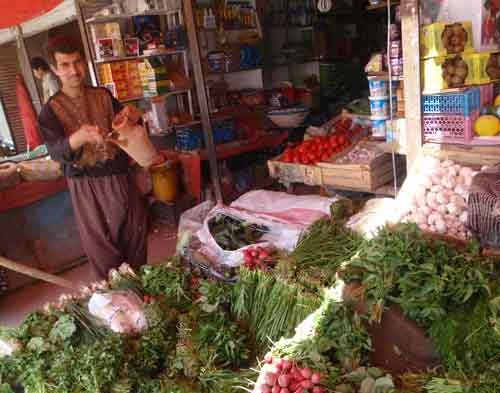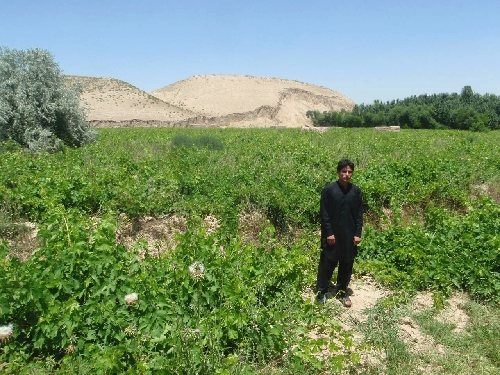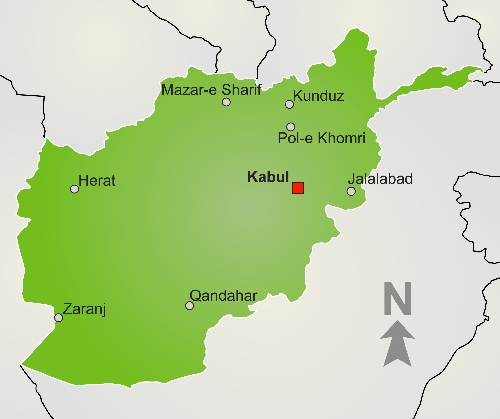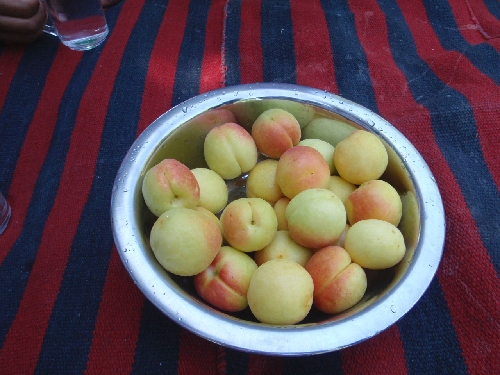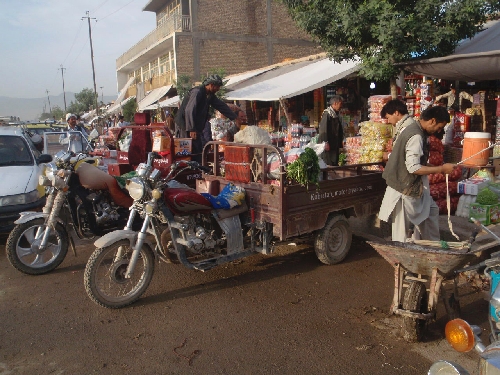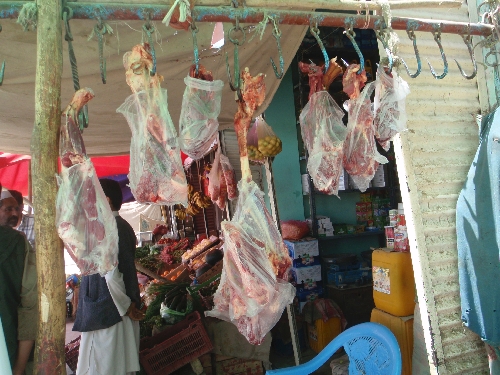Nevada, Afghanistan similar
Pomegranates, almonds, figs, pistachios, melons and grapes. They all grow in Las Vegas. They also grow in Afghanistan. You can buy them fresh at farmers markets in Las Vegas that specialize in food grown by local producers. You also can buy these same fruits and nuts at local retail markets in northern Afghanistan, produced by local Afghan farmers.
On the outside, Afghanistan and Southern Nevada are very different places. But Afghan farmers can grow the same foods we can grow in Southern Nevada. Our climates and soils are very similar.
There are two major characteristics that impact the temperature range, and thus the fruits it can support, of a desert climate: latitude (how far you are from the equator) and elevation (how high above sea level). As either of these characteristics increase in number, it generally means the climate will be cooler. Mazar-e Sharif (also Mazari Sharif), Afghanistan, and Las Vegas lie at 36 degrees north latitude. Las Vegas is around the 2,100-foot elevation mark while "Mazar" is right around 1,200 feet in elevation.
The elevation in Mazar-e Sharif is identical to the elevation in Logandale, Nev. For that reason, I assumed that Mazar might be a little warmer than Las Vegas. It's actually a few degrees cooler . It is cold enough that some grapes must be "buried" under the soil during the coldest part of the winter. This is to prevent freezing damage or even death of the vine when Afghan early morning temperatures dip to 10 F. Cold fronts move into Afghanistan through the very cold, more northern steppes of Central Asia.
As might be expected in a desert, as it is with our Mojave Desert, water is the biggest problem for farmers. In Las Vegas, if you want to pay for it, you can generally buy more water. In Afghanistan, when the water is done for the season, it is no longer available at any price. Water availability in Afghanistan is probably more similar to our "water rights" concept of rural Nevada.
Water availability ultimately determines farmers' production, and thus their income, from what they produce. Farmers closest to sources of water (mountains, perennial streambeds and rivers) have better and more reliable income from selling food because they have a more reliable source of water.
Land with available water is very valuable worldwide. In Nevada, disputes over these rights end up in court. In Afghanistan disputes at the local level are settled by the village judicial system called the Shura. If it goes beyond the Shura, it could end up with the warlords and that could mean violence.
Besides feeding themselves, farmers have alternative ways of making money provided they have a crop to sell. Ambitious farmers will take food they grow and transport it to markets in the city or rural markets in nearby villages. Some sell their food at roadside stands and even at farm sales where travelers can stop and buy directly from them. Some markets will bring them more money than others.
Transporting food from farms can be a huge problem. When temperatures stay at 95 F at night and 120 F during the day, fresh, soft produce such as tomatoes, eggplant and peppers do not transport very well . Losses as high as 80 percent can occur when food is transported by unrefrigerated three-wheeled Zarange, a donkey pulling a cart or put in the backseat of a taxi. Needless to say, meat and dairy products don't remain safe to eat under these kinds of conditions.
One reader of my blog asked me about the use of human waste as a fertilizer. Yes, it does happen. We do have to remember that the use of human waste as a fertilizer source is not uncommon in Asia. But that, and the fact that uncomposted animal manure is used as a fertilizer, is a very strong indicator that care must be used when consuming locally produced food. By the way, that goes for many organic foods produced in the United States and other countries as well.
A survey I conducted in northern Afghanistan concerning pesticide use and farmers indicated that about 75 percent of them use pesticides to protect or cure food crops of diseases, insects and control weeds. These pesticides are imported mainly from Pakistan, China and Iran. The Afghan government has no regulations or enforcement about which pesticides can or cannot be imported, what the label must tell the farmer and even how much to use on a food crop.
In one case, the label did not even mention what was in the container. And in a country with a literacy rate of 34 percent (among farmers it is much lower), most farmers can't even read the label anyway . And, there are no federal Afghan regulations to make sure that the pesticides are what they claim to be or how much can remain on the food you buy .
I live by myself so I am responsible for buying my own food and cooking it. This means I travel to the bazaar and other retail markets during the week to purchase my food. Frequently, the fruits and vegetables are in full sunlight at 110 F and higher. Meat is hung in open air markets with flies landing on the meat. Occasionally, city vendors will drape plastic over the meat to keep the flies off. The cities have open sewer systems that are "cleaned" (this means shoveled to the side so that waste will continue to flow).
My major concerns when buying food here are the agricultural residues remaining on the food and food safety, i.e., the E. colis and other sources of food poisoning. I always buy from vendors who provide shade for their products and I thoroughly clean everything when I get it home (I do not clean eggs or potatoes until I use them).
There are stores that have small coolers with food items in them. But you have no idea if these products were refrigerated on their way to the market and if the power has been on the whole time (we have frequent power failures). Just last week I bought 18 eggs that were refrigerated. Ten of them were bad.
I have traveled a lot in poor, rural areas of the Caucasus, Africa and Central Asia. I am frequently asked if I eat the local food and if I get sick. Yes, I do eat some of the local foods (cooked foods only in restaurants and raw foods that only I wash) and I have, on rare occasions, gotten sick. Every time I have gotten sick, the food poisoning came from someone's home I visited or a restaurant. I have been with people who have gotten sick frequently and it is usually because, a) they aren't careful about things that go into their mouths, and b) they don't wash their hands often enough.
First, I always wash the fruits and vegetables with cool water that I know I boiled. I do not trust restaurants of any kind with uncooked fruit or vegetables. I am also very careful about bottled water. I have seen people open bottled water, without thinking, and drink it. I know of instances where these bottles are refilled with nonpotable water, even at restaurants.
Second, I never eat homemade dairy products that have been presented to me at a person's home. Or homemade beer. Some people feel obligated and think this is not hospitable. You can always make up an excuse such as you are "not feeling well" or a "doctor has prohibited" your use of something .
Third, I never eat leafy green vegetables in these countries. There is enough evidence that food with rough surfaces, particular leafy greens, are very hard to get clean .
Last, and a rule that I sometimes get ribbed about, I wash my hands with cool, boiled water six to 10 times each day; before preparing food, again before I eat, whenever I get "home," after handling money or other transactions, and as soon as I can after meetings. Always wash in private or when appropriate. I know of Americans here who have offended locals by washing or using disinfectants after greeting them.
Bob Morris is a horticulture expert living in Las Vegas; he is on special assignment in the Balkh Province, Afghanistan, for the University of California, Davis. Visit his blog at xtremehorticulture.blogspot.com.



